Uncover practical, time-saving kitchen tips and tricks to streamline meal prep, elevate your cooking skills, and make the most of your time in the kitchen! This blog dives deep into the art of food prepping, offering essential strategies and insights designed to empower both novice and experienced cooks to simplify and enhance their culinary process.

We were featured in a Redfin article! Check it out here: Designing the Perfect Kitchen for Home Cooks
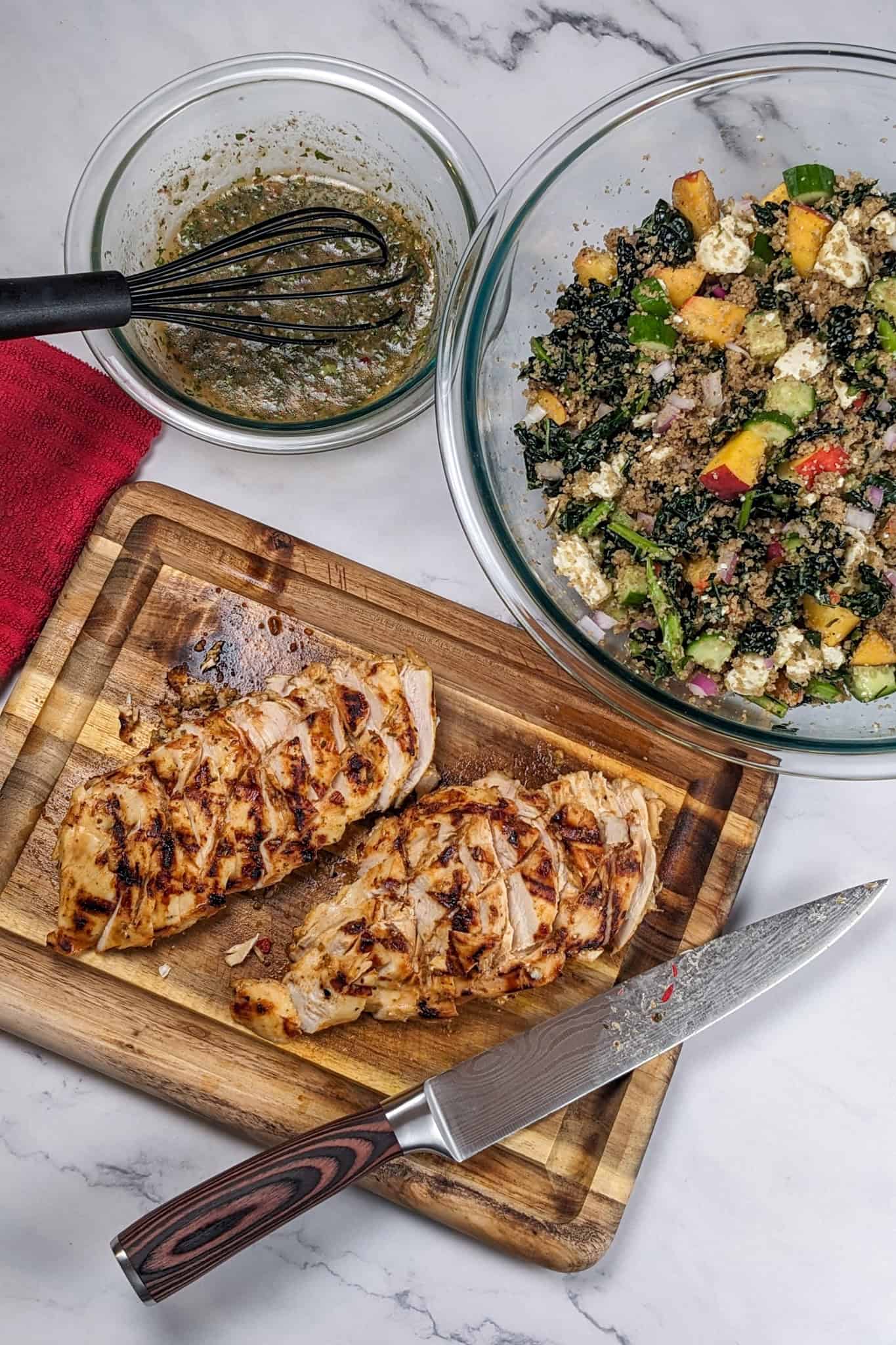
Table of Contents
Jump to:
- What to Expect
- 1. Have a Steady and Ready Cutting Board
- 2. Start with a Sharp Blade
- 3. Have a Container for Waste
- 4. Read the Recipe in its Entirety
- 5. Gather All Ingredients
- 6. Add Time-Saving Kitchen Equipment
- 7. Buy Pre-Made
- 8. Clean as You Go
- 9. Use a Timer
- Chef Maika Frederic
- More Cooking Tips
- Leave a Comment or Ask a Question

Hey! My recipe blog posts don't just have a recipe card but have countless tools for your benefit: Food history, culinary glossary, recipe summary, picture tutorials, substitutions, alternative methods, FAQs, and storage information. -Chef Maika
What to Expect
Focusing on important food-prepping tips, we delve into the art and science of effectively organizing and preparing ingredients before cooking. Additionally, we explore the importance of mise en place, a chef's practice of having all ingredients measured, cut, peeled, sliced, grated, etc., before cooking.
This approach saves time and reduces stress, allowing for a more enjoyable and efficient cooking experience. Moreover, I provide insights into how proper food prepping can lead to healthier eating habits by making home-cooked meals more accessible and less time-consuming.
Do you have a favorite food-prepping tip? Comment below.
I'll cover the benefits of reading recipes correctly and selecting the right tools and equipment to enhance both the pleasure of cooking and the quality of meals. Whether you want to refine your culinary skills or simplify your kitchen routines, this post is a comprehensive guide to making food prepping a cornerstone of your cooking practices. So, let's dig in!
1. Have a Steady and Ready Cutting Board
The challenge of cutting boards slipping and moving during food preparation is a common yet potentially hazardous kitchen issue. This seemingly small problem can lead to significant safety risks, as the instability of a moving cutting surface increases the chances of knife-related accidents, potentially causing cuts or injuries.
This can be a headache if you rush to get a meal done.
Additionally, a slipping cutting board can make precise cuts difficult, affecting the food's quality and appearance. The issue stems from the smooth surfaces of the cutting board and the countertop, which fail to provide sufficient grip to hold the board.
Solution: Line Your Cutting Board
- This will help prevent your board from moving around and slipping while cutting, which can be frustrating and hazardous when using a sharp blade.
- You want to ensure the liner is flat enough to grip the board’s bottom surface as much as possible.
- Line the bottom with a damp paper towel or kitchen towel for thick wooden or plastic cutting boards.
- Purchase a grip liner like the Carlisle FoodService Saf-T-Grip Board-Mate Nonslip Cutting Board Mat. I remember using these professionally, and yes, they work, plus this prevents paper towel waste.
- If you are using a flexible plastic cutting board like the Fotouzy Plastic Color-Coded Cutting Board Mats, place a damp paper towel under it, as shown below.

Sometimes, when prepping multiple ingredients and not wanting my banana to taste like onions, I'll place a damp cloth on my antimicrobial wooden cutting board.

Then, place the plastic cutting board on top. This will create friction and prevent the board from slipping.
This non-slip cutting board mat is a must-have for any kitchen! It's made of durable, non-porous ...
2. Start with a Sharp Blade
It may come as a surprise, but dull blades pose a greater risk than their sharp counterparts in the kitchen. The likelihood of an accident increases when using a dull knife, particularly with ingredients with a slippery outer layer, such as onions.
Food Prepping Tip 101: A dull blade is prone to slipping off the surface rather than slicing cleanly. In contrast, a sharp knife ensures precision with every cut, allowing for consistent, straight slices as intended.
Furthermore, dull blades' inability to cut accurately leads to uneven chopping and is not conducive to honing proper knife skills. Ensuring knives are kept sharp is a crucial safety practice and a matter of maintaining efficiency in the kitchen.
Solution: Sharpen Your Blades Often
- This depends on your knife and how often you use it.
- Carbon steel knives stay sharper the longest.
- Use a knife sharpener or whetstone before starting prep.
- Use a sharpening steel before and between prep to re-straighten the thin blade to keep your knife sharp. Remember, this tool doesn't sharpen your knife; as mentioned, it just lines up the microscopic metal in the blade's material.

Cook's Notebook Suggestion
Improve your knife skills, learn more food-prepping tips, like how to prep herbs more efficiently, and cut chicken in various ways.
3. Have a Container for Waste
Having a kitchen garbage can situated far from your prep area introduces a subtle yet persistent challenge in the kitchen flow during prep. This distance becomes particularly inconvenient during tasks that generate frequent waste, such as peeling vegetables, trimming fat from meats, or unwrapping packages.
Each trip to the garbage can disrupt the cooking process, leading to inefficiencies and a higher risk of spills or drips. Moreover, this separation can encourage the accumulation of waste on countertops, creating a cluttered and unhygienic workspace. And not to mention constantly bumping into others or your dogs, lol.
Food-Prepping Tip 101: The constant back-and-forth adds unnecessary steps to meal preparation and detracts from the overall enjoyment and efficiency of cooking. This highlights the importance of thoughtful kitchen layout and organization for a seamless culinary experience.
I constantly read complaints about how a recipe's time is unrealistic; human errors like this stretch your prep and cooking time!
Solution: Use a Small Portable Garbage Can
- You can achieve this using a deep square container, a medium-sized bowl, or a small garbage pail, like the INSHA Hanging Trash Can (which I personally use), attached to the cabinet next to you.
- This trash can is temporarily unavailable.
- If you click the link above and notice it is available again, please comment below for an immediate fix!
- This prevents less time walking to the garbage can.
- Everything within arm's reach creates a more efficient prep area with less time walking around.
- Your area will stay clean and free of debris, which equals less cleaning at the end of cooking.
- Here are the Top Three Suggested Kitchen Garbage Cans on Amazon
- Overall Pick: Tiyafuro's Counter Top 2.4 Gallon Kitchen Bin
- Highly Rated: ELPHECO 2.5 Gallon Kitchen Compost Bin
- Easy Storage: The Collapsible 2.4 Gallon SUBEKYU Small Hanging Kitchen Trash Can
4. Read the Recipe in its Entirety
Beginning to cook a recipe without ensuring all ingredients and steps are accounted for can lead to significant pitfalls during the cooking process. Such oversight may result in food being overcooked or burnt, as can happen with mushrooms in a stir-fry while you're frantically searching your cabinets for a container because the recipe calls for setting them aside after frying.
Failing to familiarize yourself with the recipe beforehand risks the dish's quality and contributes to a chaotic kitchen environment. This lack of preparation can leave you with half-prepared ingredients and a clutter of pots, pans, and utensils, making the cooking process more stressful and less enjoyable.
Tip!
- If the recipe uses an oven, make sure your oven is calibrated to the correct temperature!
- Using the rack in the center of the oven, hang an oven thermometer in the center of that rack. Heat your oven to the suggested temperature.
- When the preheat indicator turns off, check the temperature of your oven; if the thermometer doesn’t read the same temperature, increase or decrease the oven temperature until it meets the suggested temperature.
- Choose Your Favorite Brand. Both are Trustworthy Brands.
- KitchenAid KQ903 3-in Analog Dial Oven/Appliance Thermometer ( I personally own this one)
- Taylor 5932 Large Dial Kitchen Cooking Oven Thermometer
Solution: Skim for Important Instructions
- Read the recipe for marinades, ingredients, oven temperatures, kitchen equipment, and accessories needed beforehand to help you set up for success.
- Crucial information can also be found in the recipe's blog post.

Ingredients for the Aleppo Pepper Spiced Vegetarian Borscht recipe.
5. Gather All Ingredients
For several compelling reasons, gathering all required ingredients before cooking, known as "mise en place," which translates from French to "everything in its place," is fundamental to the culinary world.
This preparatory step ensures that all recipe components are measured, chopped, and ready to go before cooking commences, streamlining the cooking process and minimizing the risk of errors.
It's a Philosophy
Mise en place is more than just an organizational technique; it's a philosophy that promotes efficiency and calm in the kitchen; by having everything prepared and within reach, cooks can focus on the task at hand without the interruption of measuring or chopping mid-recipe.
This approach not only saves time but also helps maintain the dish's quality. It prevents the likelihood of overcooking or omitting ingredients, ensuring the final product is as close to the intended outcome as possible.
Embracing mise en place is a testament to the importance of preparation in achieving culinary success and enjoyment in the kitchen.
The Art of Culinary Arts
There are recipes where the cooking process cannot begin immediately due to the need for certain preparatory steps, such as marinating the protein for 24 hours. Additionally, these recipes might require that specific ingredients be steamed beforehand or that accompanying sides, like rice, be prepared beforehand.
This prerequisite for early preparation emphasizes the importance of reading through a recipe thoroughly before starting, ensuring that all timing and sequential steps are understood and followed.
It highlights how some dishes necessitate a degree of forethought and organization beyond simple ingredient assembly, underlining the complexity and variety of cooking techniques involved in culinary arts.
Are You Mad?!

In the culinary professional world, the term “mise en place” was drilled into our heads. This is a French culinary term that means “putting in place.” You don’t want to be in the middle of a rush and a section of your station is not set! Ugh, I can just hear my chef and see his face! No, thank you! Hahaha Chef Maika
Solution: Know Exactly What You Need
- Know your inventory and have a complete shopping list made.
- Before you touch that darn stove and start cooking, gather and prep all your ingredients and place them on a wide sheet pan.
- I personally use a pizza tray. It’s convenient and easy to store, and if I have the ingredients directly on the pan, I can easily slip them right off into a pot or pan.
- If you are prepping a recipe to cook later, place them in small, resealable containers like the OXO Good Grips 8-Piece Glass Prep Bowl Set, which has four lids and four 10-ounce bowls.
- In my photos, I use Lartique's Mini 3.5-inch Small Glass Prep Bowls, which come in a set of 12. However, if you use these, prepare to wash a lot of dishes.
- When prepping in large quantities, I use deli cups, which you probably received once with your take-out or delivery of your favorite soup order at your local restaurant. Like the DuraHome Food Storage Containers with Lids 8oz, 16oz, 32oz Freezer Deli Cups Combo Pack.
6. Add Time-Saving Kitchen Equipment
The challenge of manually prepping all ingredients when pressed for time is a significant hurdle in the kitchen. This task demands meticulous attention to detail, from washing and peeling to chopping and measuring, each step consuming precious minutes that could otherwise be spent on cooking or other activities.
In moments when time is of the essence, the slow pace of hand-prepping can be particularly frustrating, leading to shortcuts that may compromise the quality or integrity of a dish.
The manual preparation process also requires a level of skill and proficiency with kitchen tools, making it daunting for those less experienced. This combination of time consumption, required skill level, and potential inefficiency underlines the importance of time management and planning in cooking, especially when aiming to produce high-quality meals in a limited timeframe.
Solution: Invest in Multifunctional Appliances and Tools
- Food Processors - You can quickly chop herbs, onions, garlic, and other vegetables. For larger prep, you can use a larger food processor with a food shute that can even help make dough. Some may even use a manual food chopper, which is easier to store and great for meal prep.
- Japanese Mandolines - They can also help slice and shred vegetables quickly, such as carrots, cucumbers, zucchini, etc. I have personally used this Benriner brand for over 20 years. Try their newer model, the Benriner Mandoline Slicer, with 4 Japanese Stainless Steel Blades.
- Rice Cookers - These allow you to add all the ingredients, set the cooking time, and let the rice cook while you prep everything else. What rice cooker to buy?
- Air Fryers - These appliances combine an oil fryer without the need for oil with an oven, conveniently shortening the cooking time for healthier meals.
- I love my Ninja Foodi 5-in-1 Indoor Electric Grill with Air Fry, which I use almost daily. But after I saw the COSORI Air Fryer TurboBlaze 6.0-Quart Compact Airfryer on an exhibition floor at a conference, I just might make the switch! It has a removable fryer plate.
- The Ninja Air Fryer Pro 4-in-1 with 5 QT Capacity has the same features as the COSORI. Decisions, decisions!
- Another option is the Instant Vortex 6QT XL Air Fryer by Instant Pot.


Images of the Benriner Vegetable Slicer. Learn more about Japanese Mandolines.
7. Buy Pre-Made
In today's fast-paced world, where the hustle and bustle of daily life often leave little room for leisurely activities, carving out time to prepare home-cooked meals can seem daunting.
Despite time constraints and the convenience of ready-to-eat options, people have a strong, unwavering desire for nutritious, delicious food that nurtures them.
Homecooked Meals is Still King!
This yearning for wholesome meals stems from a deep-seated recognition of their myriad benefits, from improved health and well-being to the simple joy found in flavors that comfort and delight.
As individuals strive to balance their hectic schedules with the need to nourish themselves and their loved ones, the challenge becomes finding efficient ways to fulfill this desire without compromising quality or taste.
Thus, despite the relentless pace of modern life, the pursuit of satisfying and healthful home-cooked meals remains a paramount goal for many.
Solution: Have the Job Done for You
This is where the convenience of pre-cut vegetables, pre-made sauces, mixed spice blends, and rotisserie chickens comes into play. These ingredients save precious time in the kitchen without compromising on the quality or flavor of the meals:
- Pre-Cut Vegetables - They eliminate the need for washing, peeling, and chopping, allowing home cooks to jump straight into the cooking process. And yes, you can probably find them in your produce section, not just in your local supermarket's freezer.
- Pre-Made Sauces - These can provide a foundation of flavor that can be customized or enhanced, depending on the prepared dish. Check your deli for possible options as well.
- Spice Blends - They offer a quick and easy way to add depth and complexity to any recipe, ensuring that even the simplest dishes are flavorful.
- Rotisserie Chickens - These are another game-changer for quick and effortless cooking. They provide a ready-to-eat protein option for various dishes, from salads and sandwiches to soups and casseroles. Use this option to replace the chicken in some of my recipes.
These techniques reduce prepping, cooking time, and cleaning afterward, making them ideal for busy weeknights. Utilizing these time-saving ingredients allows home cooks to focus more on creativity and less on mundane tasks, making it easier to enjoy the cooking process and the pleasure of eating home-cooked meals.
Note: Find these suggestions in the "Substitution" section under "Convenience" on some recipe posts. I'm working on adding them to all my posts. So, stay tuned!
By incorporating pre-cut veggies, pre-made sauces, mixed spice blends, and rotisserie chickens into your cooking routines, you can significantly cut down on preparation time, making it more feasible to dine on wholesome, home-cooked meals even on the busiest of days.
8. Clean as You Go
The challenge of not cleaning as you go when prepping a recipe in the kitchen can swiftly escalate from a minor inconvenience to a daunting obstacle in the culinary preparation and cooking process.
This approach often leads to a cluttered workspace, where used utensils, spills, and food scraps encroach upon valuable counter space. This makes it difficult to continue with the recipe or start another task efficiently, causing stress and lost time or place in the recipe step.
Overwhelming Yourself in the Kitchen
The accumulation of dishes and mess can hinder your movement and creativity and make the cooking cleanup time longer. Thus, what should have been a pleasurable cooking experience becomes a tedious chore. This will decrease your likelihood of cooking more high-quality meals.
Moreover, this practice can contribute to a stressful environment, as the visual and physical chaos may overwhelm the cook, impacting the overall enjoyment and possibly the cooking quality of the current recipe being made.
How Do You Spend Your Time?
In essence, the failure to clean as you go can complicate the cooking process, detract from the joy of meal preparation, and leave one facing a daunting cleanup task that could have been easily managed with more proactive habits. Does this sound like fun? No!
The difference between a good and bad cook is time management. Learning efficient ways to organize will save time and give you peace of mind. Follow these food-prepping tips below.
Solution: "You Got Time to Lean? You Got Time to Clean!"
- Implement a "Use and Clean" Policy - When cooking, pause and wash the utensil or piece of equipment immediately after using it, or at least rinse and stack it neatly away if it's not immediately needed again. This keeps your workspace clear and reduces the post-cooking cleanup load.
- Prep Ingredients in Advance - Before starting to cook, measure out and chop all your ingredients. Use small bowls to hold these prepped items. This not only organizes your cooking process but also limits the mess to a specific prep time, making it easier to clean up before the actual cooking begins.
- Note: However, some of my recipes just require you to gather the ingredients and prep in between to save time. This is why it is important to skim through the entire recipe.
- Utilize Garbage Bowl/Scrap Bin - Keep a bowl or bin on your counter for trash and food scraps as you prep. This method prevents clutter and makes it easy to dispose of waste in one go, rather than multiple trips to the trash can, keeping your workspace tidy. Read more under "3. Have a Container for Waste".
- Maximize the Use of Multi-purpose Utensils - Opt for utensils and kitchen tools that can serve multiple purposes (e.g., a silicone spatula that can both mix and scrape). This reduces the number of items that need cleaning and managing during cooking.
- This is a big plus. Avoid appliances or tools that can only serve one function unless it's absolutely necessary. You will notice that many of my equipment recommendations are multifunctional; learn more here.
- Organize Workflow and Cleaning Breaks - This is just an extension of the "Use and Clean" policy because it's just that important! Strategically plan your recipe steps to include brief cleaning breaks. For instance, while waiting for something to simmer or bake, use that time to wash dishes, wipe down surfaces, and put away ingredients you're done using. This breaks up the cleaning task into manageable chunks and keeps the kitchen orderly throughout the cooking process.
9. Use a Timer
Not using a timer when prepping and cooking a recipe in the kitchen introduces a significant challenge, as it can lead to undercooked, overcooked, or inconsistently prepared dishes, especially for new recipes.
Relying on guesswork or sporadic checks can disrupt the flow of cooking, leading to distractions and potentially causing one to lose track of critical cooking times. Hence, most of my recipes include time estimation for a step to create less guesswork.
Constant checking affects the quality and texture of the food—making it less enjoyable to eat—and increases the risk of food safety issues, especially with meats and other perishable items that require precise cooking times to ensure they are safe to consume.
For example, a recipe may say it takes 25 minutes to cook chicken wings in the oven, but constant openings of the oven door cause the temperature to drop, and there is a chance of undercooked chicken wings.
Furthermore, the absence of a timer can add unnecessary stress to the cooking experience, as the cook may constantly worry about remembering the correct timing for each meal component, detracting from the enjoyment of the cooking process itself.
Solution: Use Timers as a Reminder
If a tool can help, use it. There is nothing wrong with having a timer; some misunderstood when they said, "Ditch the timer." They meant that you shouldn't depend solely on the timer but on your experience and senses.
For example, you might not need to rely on time as you repeat cooking similar recipes. In addition, using your senses, such as touching, looking, and feeling, may tell you when it will be done. Follow these food-prepping tips for better time management in the kitchen:
- Utilize Kitchen Timers or Digital Assistants - Invest in a dedicated kitchen timer or use the timer function on a smartphone, tablet, or digital assistant (like a smart speaker). These devices can manage multiple alarms simultaneously, making it easier to keep track of cooking times for different meal components.
- I used my Google Assistant on my Google Home to set stop-watches and multiple timers when developing recipes. Sometimes, I need to keep track of how long a step took or a reminder to check the food when multitasking.
- Implement Cooking Apps - Numerous cooking and recipe apps provide step-by-step instructions, often including built-in timers for each recipe step to help you stay on track. Similarly, some recipe cards on Just Maika Cooking feature built-in timers to make your cooking experience even easier. Look for hyperlinks attached to specific cooking times within the recipe instructions. By clicking on these links, you can activate a timer that alerts you when it’s time to move on to the next step or when your food is perfectly cooked. It’s a seamless way to ensure every dish turns out just right while simplifying your cooking process!
Thank You!
Well, I hope this reading about food-prepping tips really helped you become a better cook in the kitchen. And don't forget to share any takeaways or other ways you save time in the kitchen to share with others.

Chef Maika Frederic
Personal Chef and Educator
More Cooking Tips
Check out my Kitchen Must-Haves for a list of tools I use in my kitchen! You can also get the Essential Home Cooking Equipment Must-Haves list here. Become a Better Cook! Get more food-prepping tips:
Leave a Comment or Ask a Question
I'd love to hear your thoughts, questions, or experiences with working efficiently in the kitchen—leave a comment or question and get a response from a professionally trained chef!

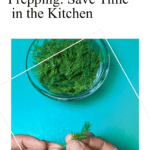

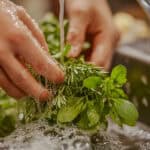
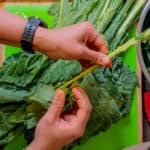
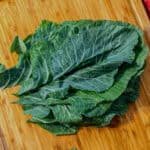

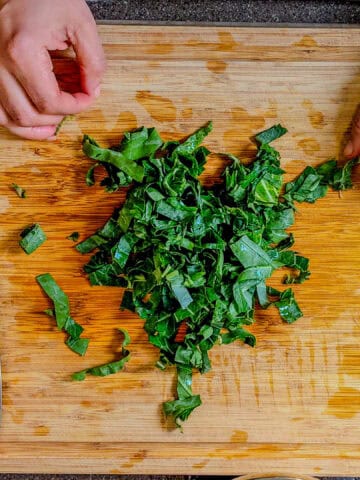
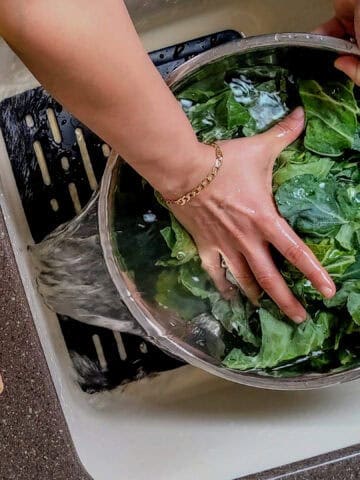

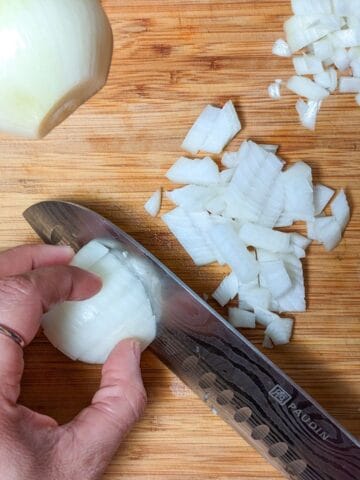
Leave a Reply